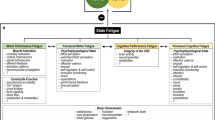Abstract
During relaxation training, awareness of trial-to-trial changes in frontalis-muscle tension levels was assessed with and without auditory electromyographic(EMG) biofeedback. Immediately after each 128-sec training trial, the subject was required to guess whether muscle tension indexed by EMG activity increased(“Up”) or decreased(“Down”) relative to the immediately preceding trial. The probability of correct guessing, P(c), improved as the absolute difference in EMG increased between trials only when biofeedback was presented. For subjects not receiving biofeedback, P(c) remained low even when the absolute difference between trials was large. Subjects in each condition employed a strategy to guess “Down” more often consistent with the expectation that they were being trained to relax. The “Down” set strategy was shown to be separable from the informational basis of P(c) provided by biofeedback. This procedure can be employed to evaluate central assumptions of biofeedback relating to posttraining awareness of changes in muscle tension and the relationship between awareness and control of muscle tension.
Similar content being viewed by others
References
Budzynski, T. H., & Stoyva, J. M. An instrument of producing deep muscle relaxation by means of analog information feedback.Journal of Applied Behavioral Analysis 1969,2 231–237.
Davis, J. F.Manual of surface electromyography (Tech. Rep. 59-184). Wright-Patterson Air Force Base, Ohio: Aerospace Medical Laboratory, December 1959.
Green, E. E., Walters, E. D., Green, A. M., & Murphy, G. Feedback technique for deep relaxation.Psychophysiology 1969,6 371–377.
Jacobsen, E.Progressive relaxation Chicago: University of Chicago Press, 1938.
Kinsman, R. A., O'Banion, K., Robinson, S., & Staudenmayer, H. Continuous biofeedback and discrete posttrial verbal feedback infrontalis muscle relaxation training.Psychophysiology 1975,12 30–35.
Staudenmayer, H., & Kinsman, R. A.Trial by trial method of training frontalis muscle relaxation: Awareness and modes of feedback (Report No. 17). Denver, Colorado: Psychophysiology Research Laboratories, National Jewish Hospital and Research Center, August 1974.
Author information
Authors and Affiliations
Rights and permissions
About this article
Cite this article
Staudenmayer, H., Kinsman, R.A. Awareness during electromyographic biofeedback: Of signal or process?. Biofeedback and Self-Regulation 1, 191–199 (1976). https://doi.org/10.1007/BF00998586
Received:
Issue Date:
DOI: https://doi.org/10.1007/BF00998586




